Iran: Shiraz and Persepolis
(Thomas;2006)
Stylistically, the tiles (and also the mosques) in Shiraz are different to those in Esfahan (or the rest of Iran, for that matter). More flowery, more sensual, the colours not as strong and vivid, more in pastel tones. Birds, plants, blooms are everywhere. The whole city is like that, in a sense.
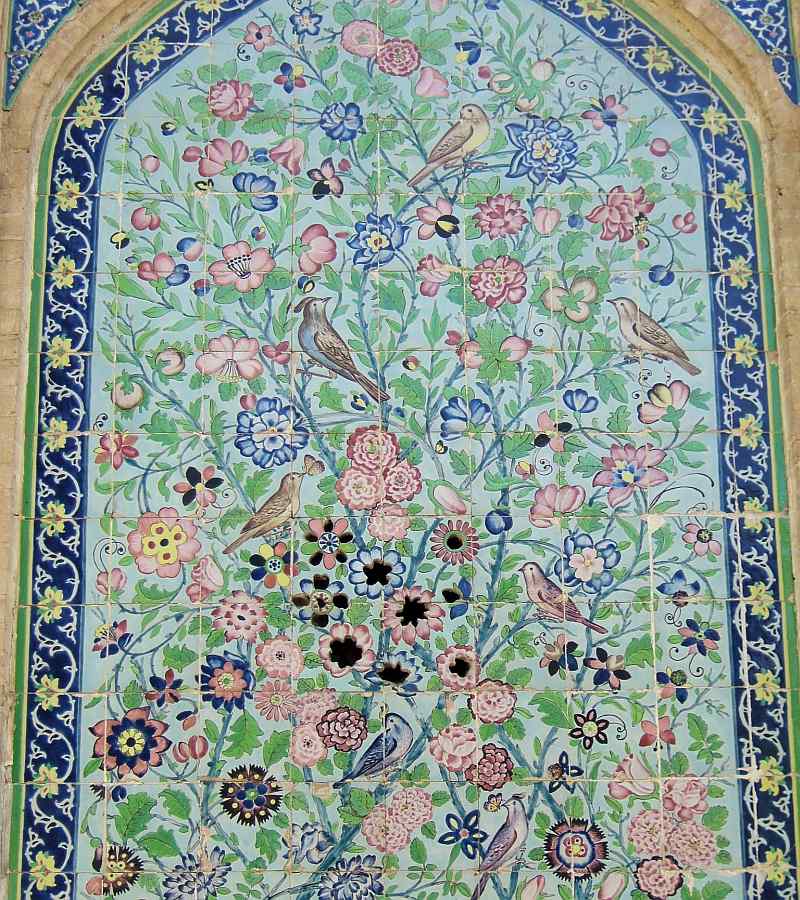
This is the Shah-e Cheragh, the place where a brother of Imam Reza (the eighth of the Shi'te Imams) is buried. His tomb is one of the most important places of pilgrimage in all of Iran: all women must wear the chador here — one of the few sites where even Véro had to wear one. In the expansive courtyard is another, much smaller tomb for yet another brother of the Imam (see the picture at the end of the page).
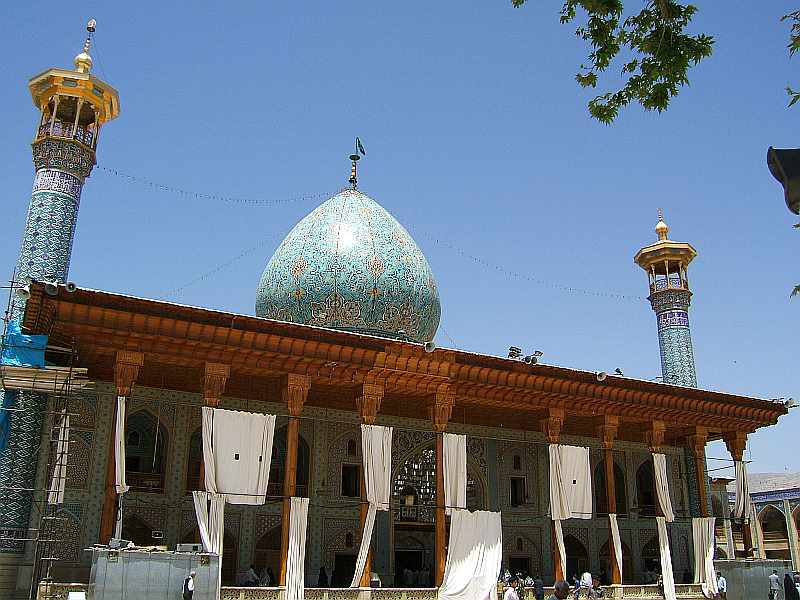
Inside the Nasir-ol-Molk Mosque, one of the most beautiful buildings in southern Iran. This is the middle part of the so-called winter prayer hall: a long, airy, elegant room with striking glass windows and a forest of finely carved stone pillars.
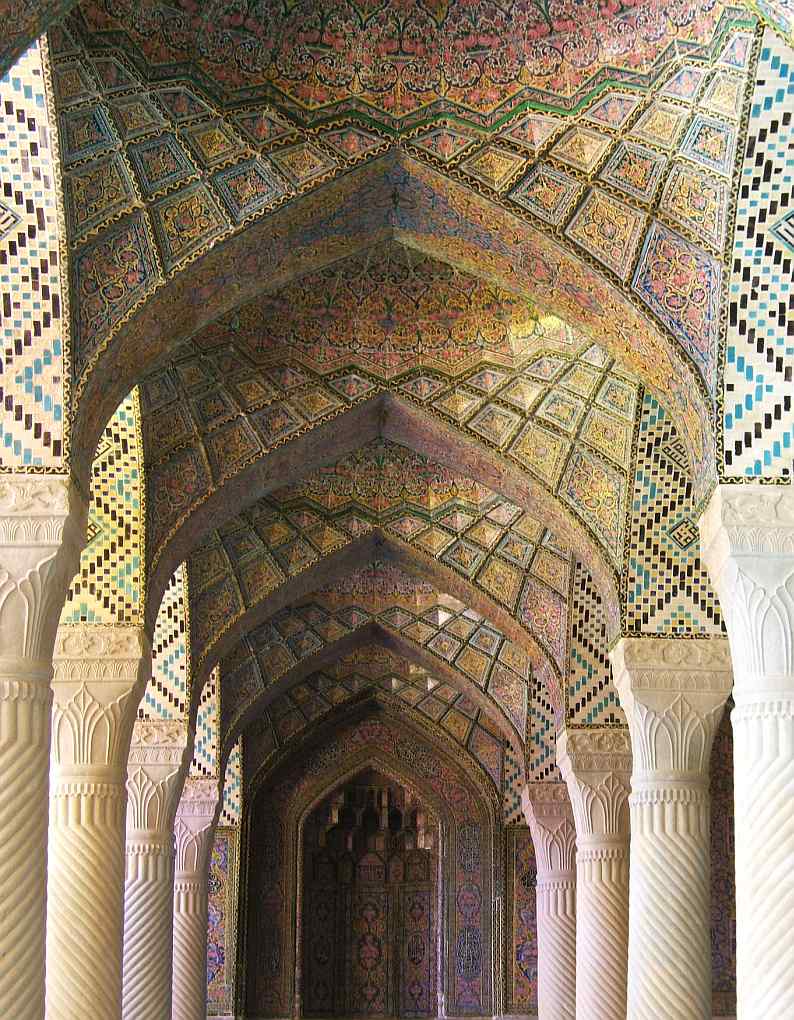
A winged bull at the Gate of All Nations in Persepolis. This and the whole site date from about 500 BC. When Alexander came round a couple of centuries later, he obviously was so impressed by the grandeur of what he saw that he had the whole place burned to the ground (a shame and surely unworthy of someone called Alexander the Great).
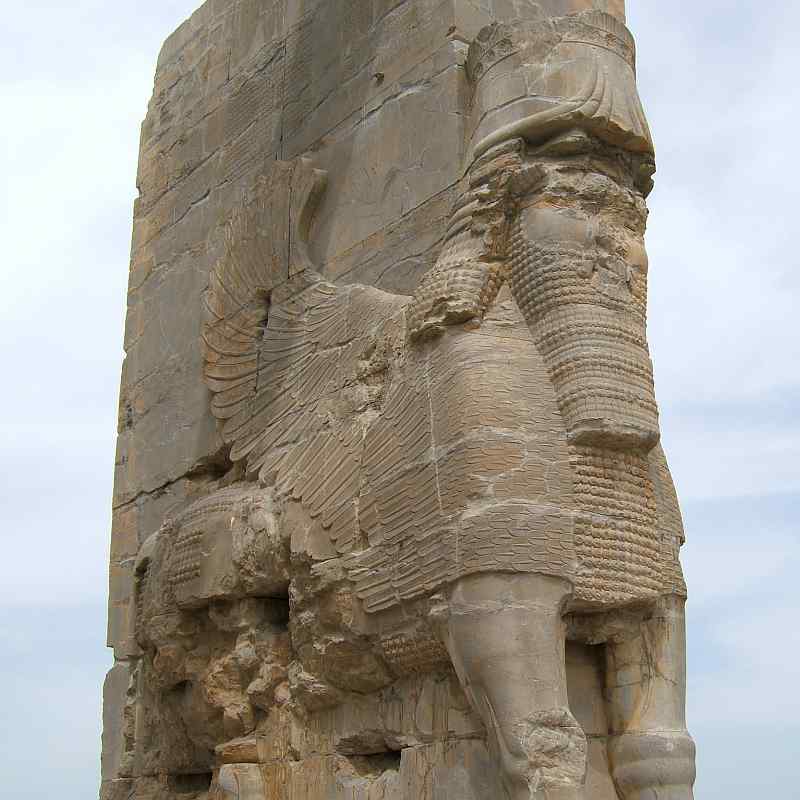
A king (perhaps Xerxes himself?) fighting with a unicorned horse. Note his knife in the lower part.
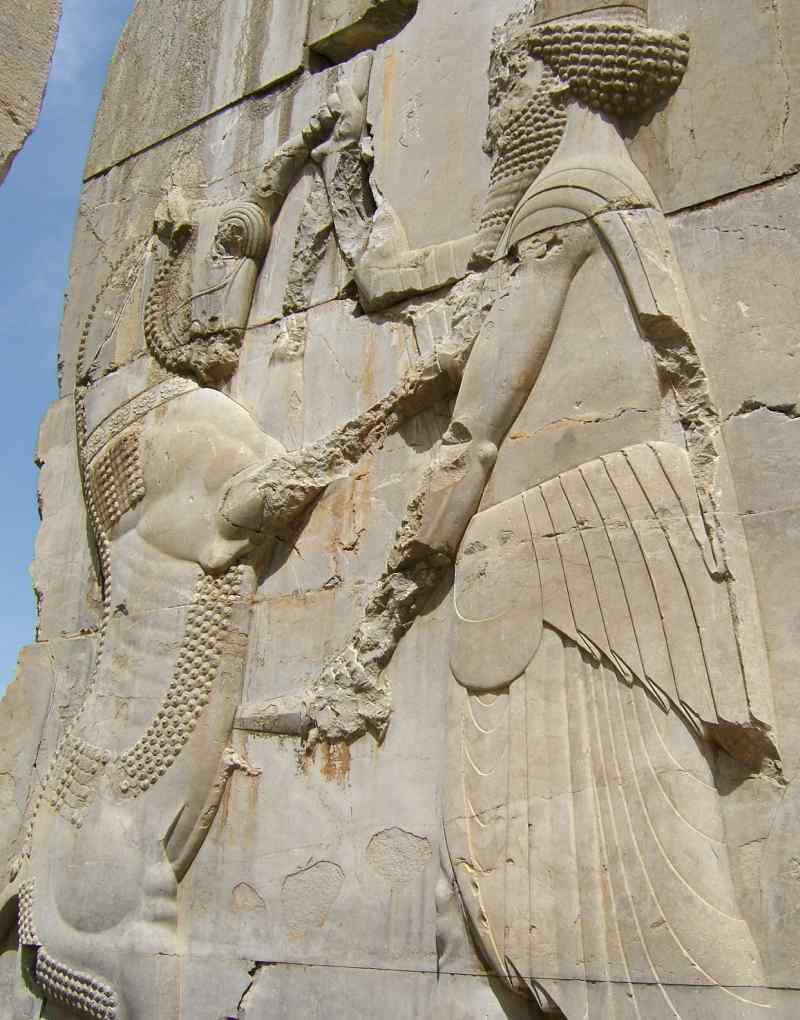
Still Persepolis: this is a tiny part of a long procession of men bringing all sorts of animals, tributes and others wares to the king.
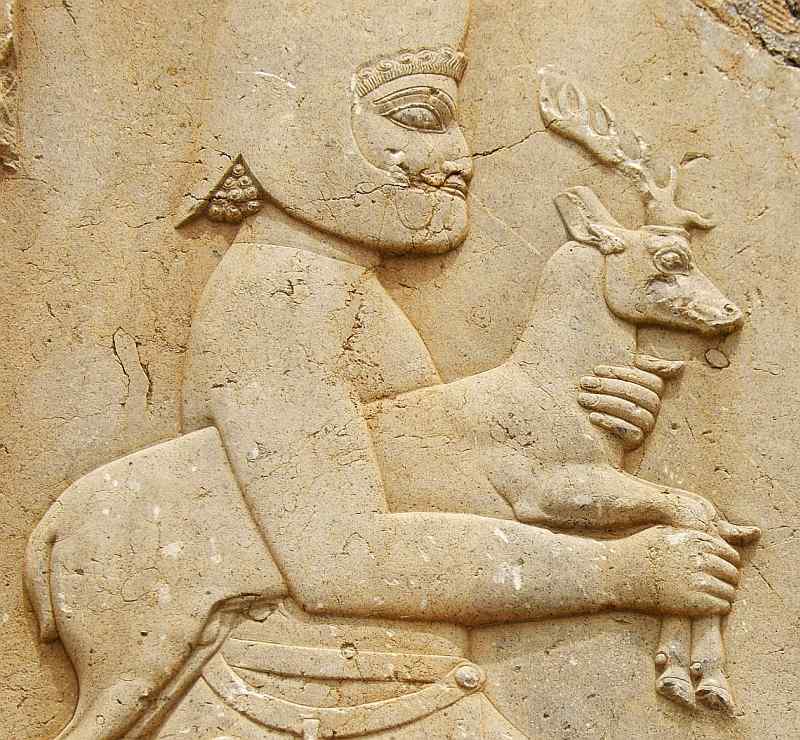
A few kilometres from Persepolis is the Naqsh-e Rostam, an impressive rock wall with burial chambers cut into the rock. Four tombs, four Achaemenid kings: Darius I and II, Xerxes and Artaxerxes. This one is supposed to be the tomb of Darius II though we have heard that there's no firm agreement among archaelogists as to who is buried where. Well, I think the ex-kings don't really care much these days.
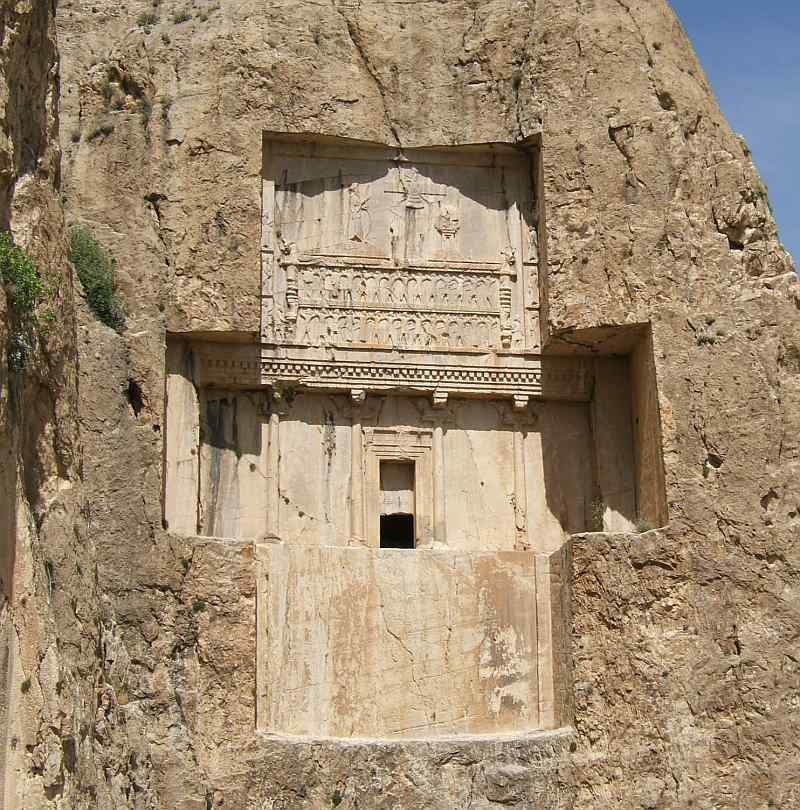
This is the chamber inside the smaller of the two tombs in the Shah-e Cheragh compound. The bigger tomb (see photo above) is even more impressive inside.
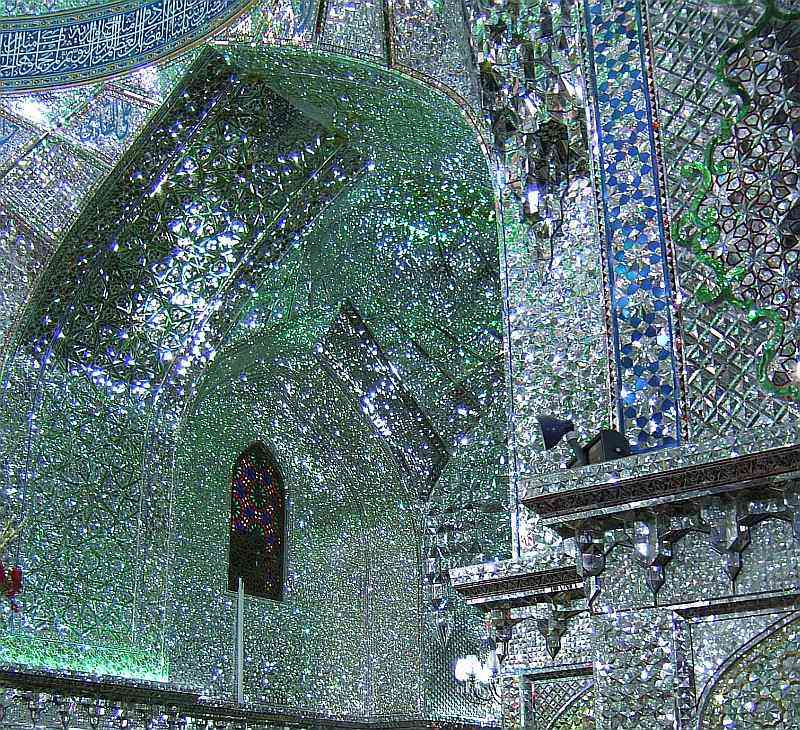
Want to see more? Go back to Iran: Esfahan, Esfahan, Esfahan or go on to Iran: Yazd and Qazvin or go up to Photos.
$updated from: Iran.htxt Mon 04 Mar 2024 16:04:39 trvl2 (By Vero and Thomas Lauer)$



